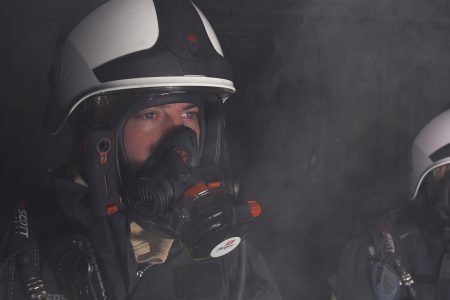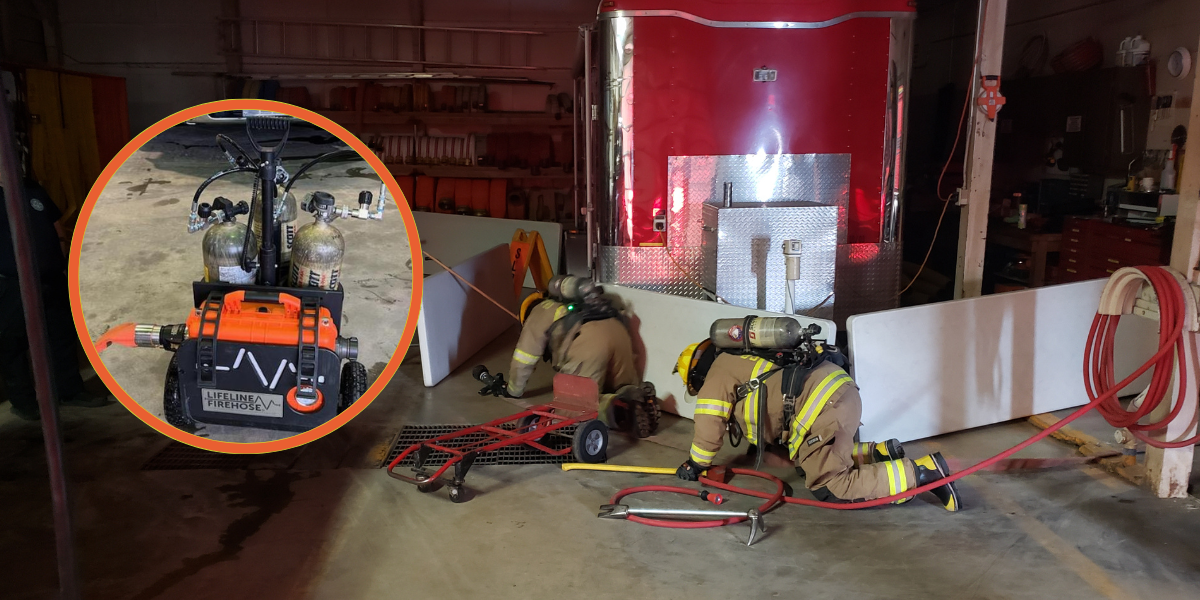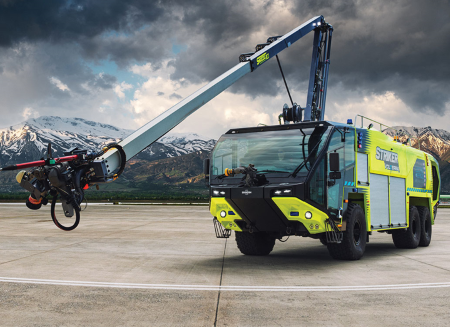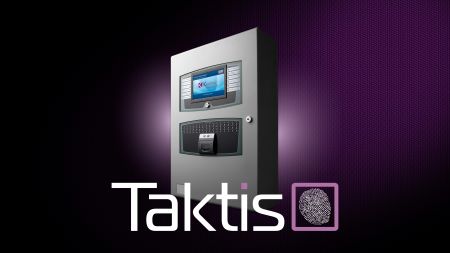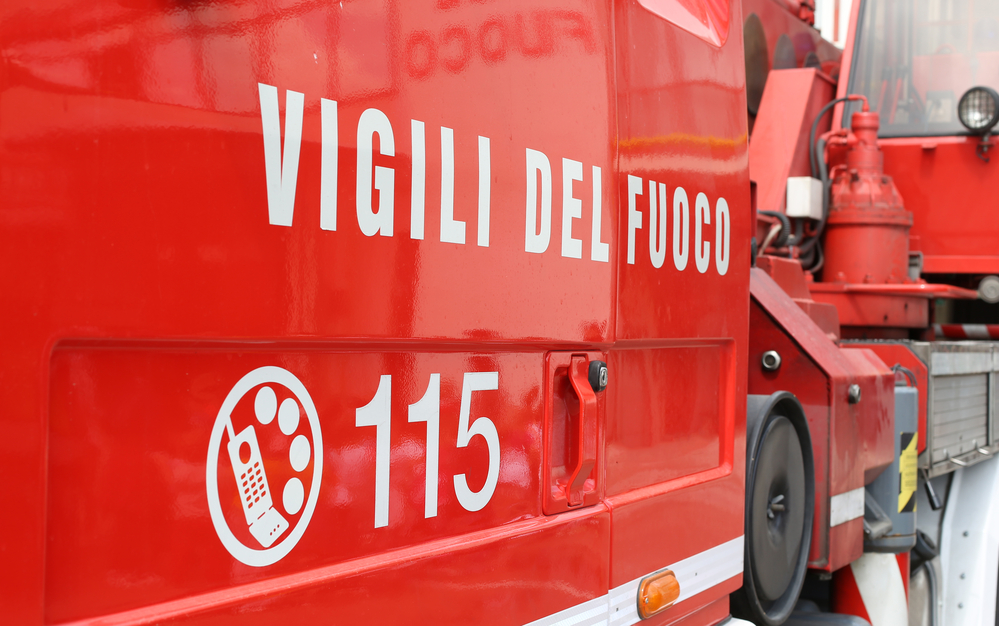Fire Buyer talks to fire and safety experts Josh Burnheimer, Global Product Marketing Manager, and Dean Mitchell, Application Engineering Specialist from 3M
3M Scott Fire & Safety is a market leading fire and safety manufacture of respiratory and personal protective equipment and safety devices for firefighters, industrial workers and militaries. International Fire Buyer Editor catches up exclusively with Josh Burnheimer, Global Product Marketing Manager- SCBA & Fire Solutions, and Dean Mitchell, Application Engineering Specialist – SCBA & Fire Solutions, 3M Scott Fire & Safety to find out how to improve situational awareness.
Josh has been involved with the fire industry for over 20 years, starting as a volunteer firefighter in high school and currently drives new product design and marketing for global SCBA products. Having visited over 55 countries, his extensive global experience allows him a unique and diverse understanding of the global fire industry.
Dean has been in the safety industry for 35 years in a variety of roles ranging from direct sales to product innovation and development. His current specialist role combines his love for product design and customer interaction with an extensive knowledge of the EN fire market.
As one of the global leaders in SCBA (self contained breathing apparatus) how does 3M Scott continue to innovate?
Josh: Since 1945, when 3M Scott developed the first Air-Pak SCBA for firefighting, a culture of innovation has fueled the company. This culture has been nurtured though the years, and as 3M Scott emerges as the recognised leader in the industry, this mindset continued to permeate everything we do.
We continue to launch new products to expanded markets, including the introduction of the 3M Scott ProPak E-Z Flo with 3M Scott AV-3000 HT Facepiece and 3M Scott Sight In-Mask Thermal Imager to the EN market. The ProPak E-Z Flo was designed to meet the needs of the professional fire service offering high performance, user comfort and a lower cost of ownership, with optional integration with the 3M Scott Sight thermal imager to increase situational awareness.
How has the introduction of 3M Scott Sight changed the industry?
Josh: 3M Scott Sight is a great example of engaging in an ongoing dialog with firefighters, encouraging them to ask “what if”? Through this dialog, a common theme emerged. What if every firefighter could see clearly in every situation? What if she or he could have thermal imaging in their mask, on-demand during fireground operations? What if they could have hands-free thermal vision? 3M Scott listened to firefighters and in a short time, designed, manufactured, and delivered Sight, the industry’s first in-mask thermal imaging system for firefighters.
Sight combines a thermal imaging camera with a small eyepiece located in the facepiece giving firefighters always-on thermal vision, increasing their situational awareness. Sight provides firefighters more than just vision. It gives them their hands back. No longer does a firefighter have to reach for a console or a TIC to gain vision in a smoky environment. Thermal vision is now always on, when they need it, and with their hands free for other tasks.
What do you see as the biggest trends in the global fire market at the moment?
Josh: There are many topics that are at the top of minds including limiting carcinogen exposure, harnessing new technologies, and total cost of ownership amidst global budget constrictions and rising inflation.
Possibly the biggest danger the industry is addressing is that of carcinogen contamination of firefighting equipment after use. Many manufacturers, including 3M Scott are introducing cleaning methods to help minimise carcinogen exposure through improved washing methods. We are also addressing this through product design. Improving the user experience and ease of disassembly encourages more frequent cleaning.
Firefighters are keen on engaging new technology, but not at the expense of job safety. Customers are moving toward utilising technology to increase a firefighter’s situational awareness. Firefighter safety depends heavily on their equipment and training. Technology can often enhance a firefighter’s situational awareness, but too much information can lead to distractions.
Dependency on technology can also negatively affect one’s ability to operate without it in the event of a failure. We can look to several other industries where an over-reliance on technology has impeded workers’ ability to think and act on the job when technology fails. It is important to keep technology simple, reliable, and robust enough to withstand extreme environments.
Lastly, users require durability and reliability coupled with a predictable through-life cost. In an era of tighter budget controls, we are seeing that the total cost of ownership is more appreciated and analysed than ever before. The ability of manufacturers to promote low up-front costs and later coupled with high service costs is quickly becoming an antiquated business model. The expensive cost of spare parts and ongoing service costs can add up quickly, taking away from critical budgets for the fire brigades. Customers should understand the total cost of ownership over the life of the product rather than the initial sales price. 3M Scott has always believed that purchasing an SCBA system is a long-term partnership with service support and minimal downtime for the user being one of the keys to success.
What are some of the challenges when designing next generation products?
Dean: We are constantly evolving product design to meet the ongoing needs of the customers and one of the largest challenges is balancing product durability, new technology, and cost.
Products should feature technology that requires minimal user interpretation to understand the information. A flashing green LED telling you everything is OK which may seem like a good idea, but it can be a distraction under heavy stress conditions. Firefighters expect their equipment to work as it should; they only want to be alerted if there is an issue that needs their attention. Technology in an SCBA is meant to enhance the user’s situational awareness and increase their safety, but it is important to remember the fundamental objective of any piece of equipment being considered. A breathing apparatus’ primary function is to supply clean breathing air in the most hostile of environments. All other attributes are secondary.
Balancing new technology with product durability and cost tends to garner many hours of collaboration among our team members.
How has COVID-19 impacted product development?
Dean: During COVID-19 we were all forced to produce alternative methods of conducting testing, collaboration, and engagement. As a global development team, we found that we are more engaged with global teammates through modern video technology. Instead of product design being based in a single location, we have developed a global model that garners equal engagement regardless of physical location. Our teams have had to get creative with product testing as we have had limited access to fire brigades, so we have resorted to sometimes unique testing methods. In some cases, our team has even built firefighter training obstacle courses in their backyards utilising trampolines, boxes and treadmills to test prototypes when they were unable to travel.
Overall, I believe there has been minimal impact on product engineering as the resiliency of our teams and ability to adapt and evolve continue to drive toward our product innovation goals.
How does 3M Scott remain engaged with customers?
Josh: We understand the inherent dangers of firefighting and the need for improved technology in safe and reliable products. We have a strong history in the fire service and engage with firefighters on a regular basis to understand their needs and concerns. Our teams remain actively engaged to understand the true customer need, not just the customer “wants.” While recently engaging with local fire brigades, they questioned the need for additional “blinking lights” when they were accustomed to asking for someone’s air level or location on the radio. Through our insights research, communication is often cited as one of the key opportunities for improvement on the fire ground; unnecessary radio traffic such as relaying air levels, location, and job duties can often overwhelm the radio with non-critical chatter. Buddy-lights are a form of non-formal communication. They help minimise unnecessary radio traffic while also providing a visual indicator of team member’s status and location. Once firefighters understood that buddy lights are not just “flashing lights” but tools to visually communicate critical information, they see the benefits as it reduces unnecessary radio traffic. This is just one example of identifying, understanding, and addressing the needs of customers versus simply asking what they want.
How does the AV-3000 HT and ProPak address the needs of firefighters?
Dean: The 3M Scott AV-3000 HT Facepiece and E-Z Flo demand valve addresses several new market trends with its introduction to the EN market. Both the facepiece and demand valve are easy to clean, provide a low breathing resistance, and offer an extended 10-year warranty. Unlike other demand valves, there is no required rebuild at pre-defined service intervals, thus providing customers with a lower lifetime cost of ownership.
The AV-3000 HT is designed around use with a gloved hand, features a wide field of view, dual speech diagrams, voice communication units, and an optional 3M Scott Sight In-Mask Thermal Imager to provide users with improved situational awareness.
The 3M Scott ProPak SCBA utilises the new AV-3000 HT and E-Z Flo demand valve to offer firefighters a comfortable, reliable platform to get the job done. While the set can be washed in its entirety, the toolless removal of the pneumatics allows for a more thorough cleaning to minimise carcinogen exposure after use.
Will we see your new product innovation at Interschutz 2022?
Josh: Yes, 3M Scott is looking forward to the opportunity to interact with global customers at Intershutz 2022 and will showcase current and possibly even some future products for the fire service. We see it as another opportunity to engage with our customers to garner a better understanding of their needs, especially after COVID-19 where many localities have been locked down for months.
What would be your key advice for fire brigades when purchasing new equipment?
Josh: There are many aspects to consider when purchasing new equipment. It should be a process that involves the individuals using the products but also includes those making the purchase decisions. I would encourage customers to look deeper than just purchase price and consider total cost of ownership over the life of the product, the durability and reliability to perform its core function, and the integration of technology meant to enhance situational awareness and accountability. Fire brigades should reach out to their local sales representative as they can provide an extensive amount of information and trials to assist in the purchasing process.
Technical Overview
3M Scott ProPak E-Z Flo and 3M Scott AV-3000 HT Facepiece
ProPak EZ-Flo
- Designed for use by the professional fire service or as a firefighting set in the oil and gas or industrial markets
- Rigid back frame construction with optional height-adjustable backplate with padded upper and lower harness for improved comfort
- EZ-Flo demand valve features low breathing resistance, first-breath automatic activation and hands-free bypass
- Quarter-turn audible and tactile donning
- Ergonomically designed demand valve to fit in firefighter’s gloved hand
- Demand valve is fully servicible with no required rebuilds at predetermined intervals
- Option accessories including split demand valve coupling (SDC), airline attachment, and Y-piece
- When used as designed, approved to: EN 136:2006 Type 2, BS 8468-1, AS/NZS 1716:2012
AV-3000HT
- High Performance, Rugged Dependabuility
- Improved breathability and lower exhilation resistance
- Dual speech diaphragms for improve voice communicaiton
- Safer and quicker to don as firefighters can don facepice in arriving apparatus and retain ability to breath through large open front port prior to donning demand valve
- Allows for quicker entry into hazard
- Improve safety as it does not require firefighters to remove helmet on scene
- 10-year warranty
- Available with Kevlar or rubber head harness
- Lower Cost of Ownership- no required planned rebuild
- Anti-Fog cooling spray bar integrated into E-Z Flo demand valve
- Available with 3M Scott Sight in-mask thermal imaging system
- High temperature lens designed for NFPA 15Kw/M2 radiant heat requirement
- Can be coupled with the innovative 3M Scott EPIC 3 voice projection unit, which greatly increases voice intelligibility on emergency scenes
- Avaiable in S,M,L faceseal and S,M,L nosecup to ensure appropriate fit
- When used as designed, the facepices is approved to: EN 136:1998 Class 3, EN137:2006 Type 2, BS 8468-1, BS 8468-2, AS/NZS 1716:2012, BMP 540244
To stay up to date on the latest, trends, innovations, people news and company updates within the global fire market please register to receive our newsletter here.
Media contact
Rebecca Morpeth Spayne,
Editor, International Fire Buyer
Tel: +44 (0) 1622 823 922
Email: editor@firebuyer.com



